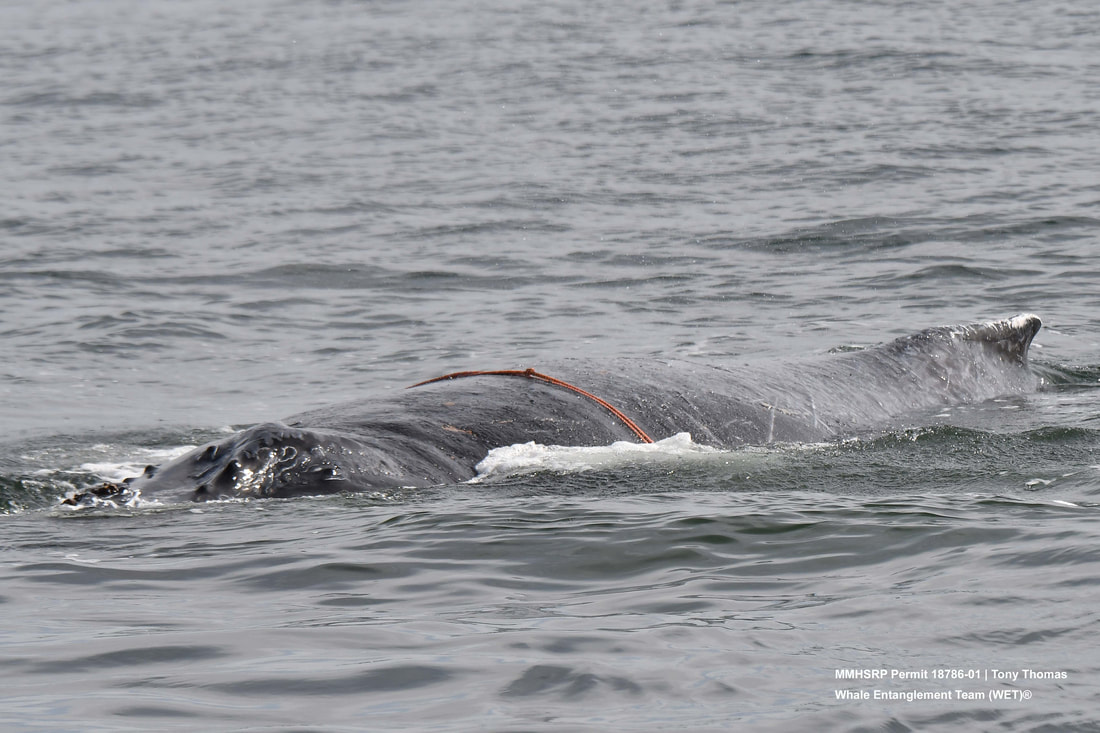whale entanglement team® responded saturday, 11/25/17, after receiving call about entangled whale in the Monterey Bay
During the SPLASH project (Structure of Populations, Levels of Abundance and Status of Humpbacks) project 2004 through 2006, the most comprehensive study ever attempted of the North Pacific humpback whale poplulation. Peggy Stap, founder of Marine Life Studies and co-founder of the WET®, was part of this project both in Maui and in Monterey Bay. One result from this study was that over 50% of humpback whales in the North Pacific had entanglement scars so we knew some of them were throwing the gear. What we did not know is how many have died from entanglements. The WET® crew was thrilled to see this calf free of the entanglement and swimming freely with mom.
How you can help if you see an entangled whale:
Report immediately, call 877-SOS-WHALE (877-767-9425) or hail the U.S. Coast Guard on VHF CH-16.
If possible, please stay with the animal while maintaining 100 yards distance from the animal. Authorized personnel will guide you as what to do next.
If possible, please stay with the animal while maintaining 100 yards distance from the animal. Authorized personnel will guide you as what to do next.
Provide the following information to help authorized responders:
All photos are copyrighted. Photos taken under the MMHSRP Permit. The Whale Entanglement Team (WET)® is part of the West Coast Large Whale Entanglement Response Network.
Learn more about WET® and how you can help.
- Note the nature of the entanglement, location of the entanglement on the whale's body (i.e. a blue line wrapped around the tail (fluke) and wrapped around body by dorsal fin, description of the gear trailing (i.e. buoys if any and the number and color of the buoys, line or other gear trailing with approximate distance behind the whale the gear is trailing).
- Relay the whale's exact location (be as specific as possible, include latitude and longitude if available). Did you know you can get your exact location with your smart phone. Click to learn how.
- Other details such as is the animal swimming (speed and direction the animal is heading, is it diving or staying on the surface, is it breathing). One of the important keys to the success of freeing a whale from a life-threatening entanglement is to have someone standing by until one of our Whale Entanglement Team members arrives.
- If you are able, while maintaining 100 yards from the whale, please take high-resolution photographs of the whale including: the right and left side of the animal including the dorsal fin, the head and back on both sides, the area between the dorsal fin and the fluke (tail), the underside of the fluke if the animal is diving (if it dives it will raise its fluke vertically above the water and the underside of that fluke is a unique pattern that we can identify individual animals, like a human fingerprint), and any trailing gear or buoys.
All photos are copyrighted. Photos taken under the MMHSRP Permit. The Whale Entanglement Team (WET)® is part of the West Coast Large Whale Entanglement Response Network.
Learn more about WET® and how you can help.












